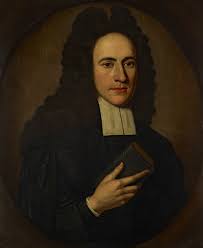The Door -- Tim Phillips
When I was a Student of Theology roughly twenty years ago, it was fairly customary at the time to be asked during committee and/or presbytery examinations to name the so-called Seven Signs and the Seven "I Am" Statements found in the Gospel of John. I say "so-called" because there are technically more than seven signs in John (e.g., John 2:23; 20:30) and there are more than seven "I am" statements (e.g., John 6:20, albeit this does not follow the "I am X" formula). But these signs and statements do help to structure the first part of John's Gospel, and they help to establish the apostle's overall goal and theme: "These have been written so that you may believe that Jesus is the Christ, the Son of God; and that believing you may have life in His name" (John 20:31). I was even assigned one of the better known of the "I am" statements when I preached before my current presbytery: "I am the Good Shepherd" (John 10:11).
I am currently preaching through the signs and "I am" statements of John during the morning Lord's Day services in my current congregation. As well known as some of the "I am" statements are, there is probably one statement that gets forgotten or overlooked or overshadowed: "I am the door" (John 10:7, 9). The door which Jesus uses as a metaphor is the door of a sheep pen. We tend to think of those as being found in the countryside, but this is almost certainly a reference to a walled section of in courtyard of a village near the residence of the owner of the sheep. A shepherd (either a member of the family, or someone hired by the family) would go in through the door (or gate) and lead the sheep out to pasture each day. Thieves and robbers would not enter through the gate, but would climb over walls to reach the sheep. In John 10, Jesus first uses a figure of speech to explain how the true shepherd of the sheep enters through such a door (a figure of speech which was misunderstood, according to John 10:6), then proceeds to declare that He Himself is this door which must be entered by.
What does Jesus mean by this? John 10 follows John 9, but there are no chapter breaks in the original version of John's Gospel. There is no indication in the text that the audience of John 10 has changed from the end of John 9. In John 9, Jesus heals a man who had been born blind, and He then uses that sign/miracle to point out the spiritual blindness of the Pharisees (John 9:39-41). He is continuing that conversation as John 10 begins. The Pharisees, because of their spiritual blindness, rejected Jesus' Messianic claims and refused to come to Him (i.e., they refused to enter through "the door"). Unlike the man who was born blind and now could see, who believed in Jesus and worshiped Jesus (John 9:38), they refused and were hardened in their sin and unbelief. They were both blind and deaf to the claims of Jesus.
In preparing to preach on John 10:6-10, I cam across a story in Kent Hughes' commentary on the Gospel of John that helped solidify the power of Jesus' declaration that He is the door. The story was about the travels of an Old Testament scholar, Sir George Adam Smith, who once visited the Middle East and met a shepherd:
He was one day traveling with a guide, and came across a shepherd and his sheep. he fell into conversation with him. The man showed him the fold into which the sheep were led at night. It consisted of four walls, with a way in. Sir George said to him, 'That is where they go at night?' 'Yes,' said the shepherd, 'and when they are in there, they are perfectly safe." But there is no door,' said Sir George. 'I am the door,' said the shepherd. He was not a Christian man, he was not speaking the language of the New Testament. He was speaking from the Arab shepherd's standpoint. Sir George looked at him and said, 'What do you mean by the door?' Said the shepherd, 'When the light has gone, and all the sheep are inside, I lie in the open space, and no sheep ever goes out but across my body, and no wolf comes in unless he crosses my body. I am the door.'
This is the point Jesus is trying home in the passage, and why "I am the door" leads naturally to "I am the Good Shepherd." He is not only the entry way, but He is the great guardian of the sheep is well. He also sacrifices Himself, laying down His life for the sheep. In Him we are perfectly safe. He leads us to safe pasture, and He guards us from the wolves of this world. That is why we must believe in Him, and that is why the only appropriate response is to worship Him. That is why we must hear His voice and follow Him. To do otherwise would mean that we are not His sheep (John 10:27). But if we are His sheep, He holds us securely, and no one can snatch us out of His hand (John 10:29). He is the door, and He is the Good Shepherd, and we find our rest only in Him.




Comments
Post a Comment